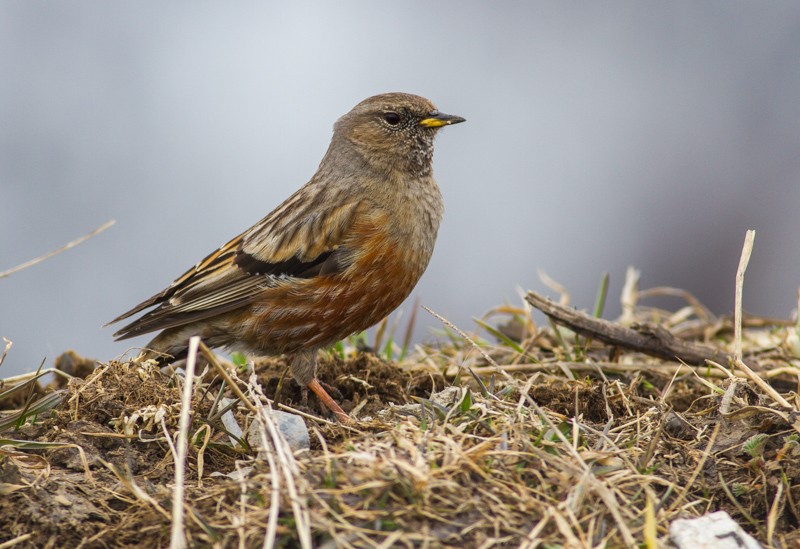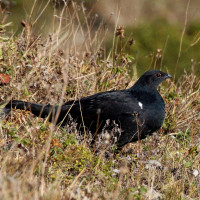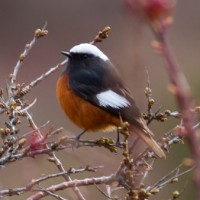Opis
The town of Stepantsminda is located along the Terek river (the one the bird is named after) at an altitude of 1700m. This means that it only takes little effort to reach higher altitudes for specialities like Caucasian Snowcock and Cietrzew kaukaski. The people are amazingly friendly and helpful and the food is great (though don't forget to ask 'without coriander' if you're not into that).
Mount Kazbek (5033m asl) towers above the small town and is a sight for sore eyes in the morning when it's still freezingly cold down in the village. Birds like pomurnik (newly created electric dam) and kulczyk królewski (flying by) can be easily seen close to the village. Cietrzew kaukaski and Caucasian Snowcock require a little more effort and being an early bird pays off here. For both these species you have to watch, at dawn, from the road leading up to Ioane Natlismcemeli (small monastery on the east side of the town). Mountain Chiffchaff (Caucasian), drozd obrożny and kulczyk królewski can be seen here too. White-winged Redstart and dziwonia kaukaska (two of the star birds) can be seen wintering in the Hippophae (Sea buckthorn) bushes to the southeast and northwest of the village. The Gergeti Trinity Church is a good place to start a hike up towards the glacier, all the specialties can be seen along the route there.
Szczegóły
Dostęp
Gergeti Trinity Church (gps: 42.662, 44.619) is a good place to start exploring the high altitude species. In spring, the dam (gps: 42.665, 44.644) and the Sea buckthorn to the north of there is interesting for wintering species. Click on a P in the map to get directions to that place.
Teren i siedlisko
Góry , Dolina , RzekaWarunki
Górzysty , SkalistyTrasa dookoła
TakCzy luneta będzie przydatna ?
TakUdany sezon obserwacyjny
Wiosna , LatoNajlepszy czas na wizytę
WiosnaTrasa
Droga nieutwardzonaPoziom trudności szlaku pieszego
ForsownyDostępne
Pieszo , SamochódCzatownia/platforma obserwacyjna
NieDodatkowe informacje
A car is handy to drive up to the Trinity Church, but a walking trail is also accessible.





